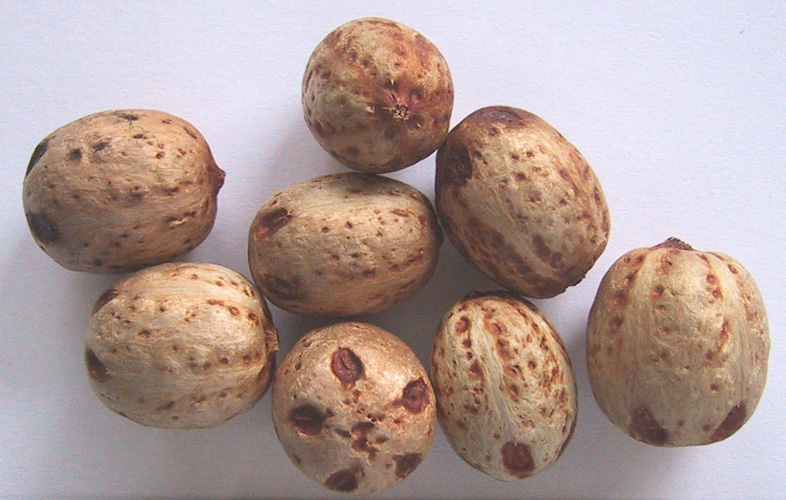Posted by: Neupane November 8, 2005
Login in to Rate this Post:
0  ?
? 
 ?
? 
Lapsi....
shiv, i know it is very hard to find info on lapsi as it is not abundant everywhere and has very limited but wonderful use.
who can forget Paaun or titaura...?
whoareyou, hog plum is different than lapsi. hog plum is Common name: Mombin, Hog Plum, Ciruela, Jocote,Botanical name: Spondias purpurea
Family: Anacardiaceae; Origin: Central America
Avg. Height X Width: 15' X 15';Varieties: Red and Yellow
Season: May to July; Damage temp: 27 F
Comments: The trees go dormant in the winter and drop all of their leaves. As spring begins to break the trees begin to flower, and the fruit follows in 45-60 days. The fruit and flower of the hog plum occur right on the branches as opposed to hanging from the tips. They are usually eaten as fresh fruit or pickled green and eaten in East Indian cooking.This is hog-plum...


Lapsi or Choerospondias axillaris
here is a summary of article by...K. C. Paudel, K. Pieber, R. Klumpp and M. Laimer Evaluation of Lapsi tree (Choerospondias axillaris, Roxb.) for fruit production in Nepal Summary Choerospondias axillaris (Roxb.), a large, deciduous, and dioecious sub tropical fruit tree has been recognised as a potential agroforestry tree for income generation for subsistence farmers in Nepal. The tree, locally called Lapsi, produces fruits with high vitamin C content, which are consumed fresh, pickled and processed for preparing varieties of sweet and sour, tasty food products that are marketed locally and have potentials for exporting. With the objective to domesticate this tree for small holders benefit, the status of indigenous knowledge about cultivation, management and utilization, fruit processing and marketing as well as occurrence and distribution in Nepal were studied and presented. Based on farmers knowledge, varieties of Lapsi, their sex determination criteria and processing practices are identified and presented. A distribution map of Lapsi in Nepal was prepared from over 450,000 trees already growing in farms and community forests. As first step towards domestication the identification, selection and evaluation of superior mother trees has been initiated and a Breeding Seed Orchard with 52 selected trees has been established to conserve the selected germplasm. Vegetative propagation methods for multiplying selected trees were studied using budding, grafting, hardwood and softwood cutting propagation and tissue culture. Among all techniques studied, chip budding during the first three weeks in February was most successful (up to 90%), followed by softwood (40%) and hardwood (7%) cutting propagation. Axenic cultures were established in vitro using DKV medium supplemented with 1mg/l of BAP and further multiplication of cultures under different culture conditions is currently being studied. Lapsi has been recognised as a potential agroforestry tree for domestication. ******************************************* i still remember throwing stones to get some lapsi in gorkha... my shoulders sore for few days... as well as my teeth were aching after eating too many green lapsi.... he he
